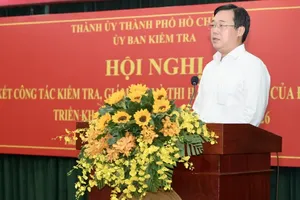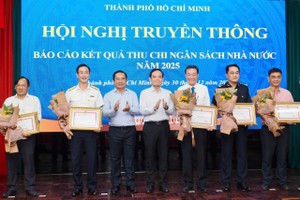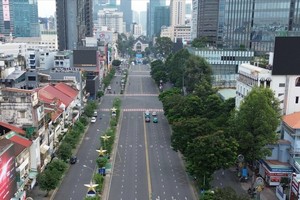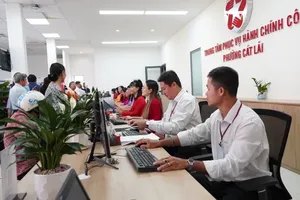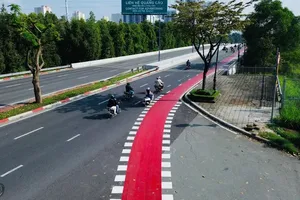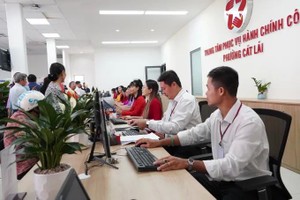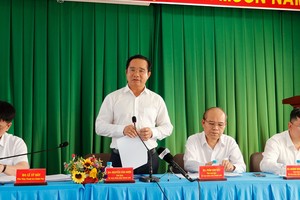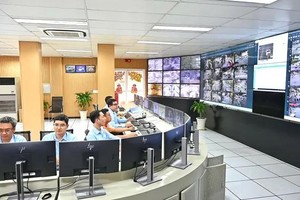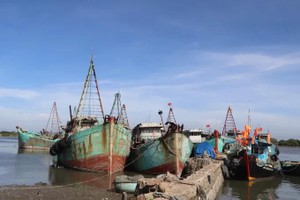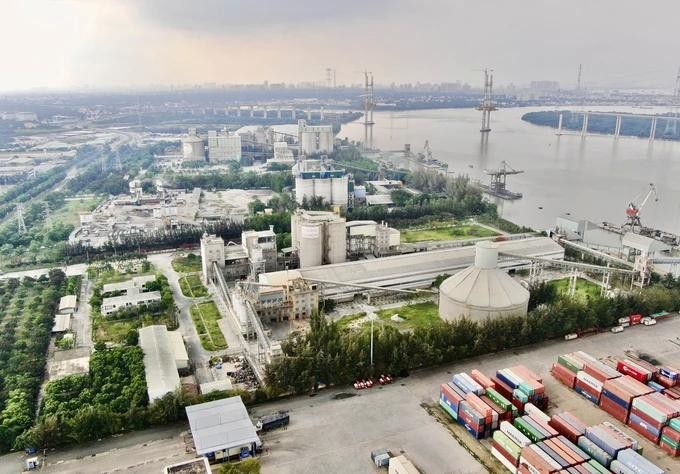
Specifically, the initial effectiveness of industrial symbiosis - industrial activities where a waste or by-product of one actor becomes a resource for another actor - is seen at At Khanh Phu Industrial Park in the Northern Province of Ninh Binh, Ninh Binh Gas Company has implemented a project to produce liquefied CO2 using input materials from the exhaust gas source of Ninh Fertilizer Plant.
The project has been in operation for 3 years, with a capacity of 6,000m3 CO2 per hour, helping to reduce over 74,000 tons of emissions into the environment each year and it is expected that the capacity will be increased to 12,000m3 CO2 per hour in August 2024. This is one of the typical examples of industrial symbiosis in Vietnam today.
The Decree 35/2022 stipulates that industrial symbiosis is a cooperative activity between businesses in an industrial park or in different industrial parks to optimize the use or reuse of input and output factors such as raw materials, water, energy, waste, scrap and other factors in the production and business process.
Technical Manager Nguyen Tram Anh of the National Eco-Industrial Park Project Management Board in Vietnam said that according to the approach from the global eco-industrial park program, industrial symbiosis is an innovative form to increase the productivity of resource use and is one of the approaches to realizing a circular economy and achieve green growth.
Ms. Tram Anh gave an example of Industrial symbiosis. A green energy company hired the roof of Bridgestone Vietnam Company to install a solar battery system at Deep C Industrial Park in the Northern City of Hai Phong.
With 80 percent installation of the factory roof area, the company achieves an output of 14,321 MWh a year, basically meeting the company's needs and also supplying a number of other companies in the industrial park. Biogas emitted by a beer company in Hoa Khanh Industrial Park in the Central City of Da Nang becomes fuel for the boiler of an energy service company. Three companies in Tra Noc 1&2 Industrial Park in the Mekong Delta City of Can Tho are sharing boilers.
Some investors at Nam Cau Kien Industrial Park in Hai Phong City said that in recent years, a symbiotic chain of green energy and resource saving has been formed and developed. At the park, scrap from the steel industry is steel slag which is processed into standard leveling material while plastic is recycled into plastic pellets and finished plastic products such as household appliances, laces, and packaging. Scrap is produced into auxiliary products and components for the electrical industry.
Similarly, in Hiep Phuoc Industrial Park (HCMC) many industrial symbiosis models bring high efficiency.
Mr. Christian Susan from the United Nations Industrial Development Organization (UNIDO) said that industrial parks with many concentrated businesses facilitate the promotion of industrial symbiosis. Businesses join forces to help reduce the need for resources and promote economic circularity. Mr. Christian Susan cited many examples of good international industrial symbiosis practices such as turning slaughterhouse waste into animal feed in Peru or using artificial intelligence (AI) to turn CO2 emissions from the food industry into baking soda in South Africa.
According to Mr. Christian Susan, Vietnam also has great potential for the implementation of similar models. Chemical and environmental expert Nguyen Thi Kim Lien also assessed that the potential for industrial symbiosis in Vietnam's industrial parks is huge.
Currently, there are 412 established industrial parks in the country, of which 293 have been put into operation. Through the survey, it can be seen that the level of readiness to implement Industrial symbiosis and circular economy of all parties is gradually improving. However, experts recognize that legal and policy are major barriers to the development of industrial symbiosis. According to expert Nguyen Thi Kim Lien, in general, current policies lack financial and economic incentives for businesses to implement industrial symbiosis of renewable energy while investment procedures for renewable energy projects are still complicated and there is a lack of supportive policies.
In particular, policies in the field of reuse and recycling of waste are not strong enough to develop the market for recycled products. Talking about this, some businesses said that they had difficulty sending waste outside the company to supply to other units, because the regulation states that waste must be treated before being sent out. In addition, if you want to reuse treated wastewater, there are currently no instructions and technical regulations to use this water for watering plants and as input water for businesses.
Experts say that industrial symbiosis is a requirement for ecological industrial parks and an inseparable part of circular economic models. Therefore, it is necessary to perfect policies to promote industrial symbiosis in the coming time.
As one of the leading localities in the development of industrial parks - export processing zones (IZs - EPZs), Ho Chi Minh City has soon realized that green transformation is an inevitable trend. The city has studied and found that the industrial parks and export processing zones in the area have entered the post-industrial stage and are initially transitioning to a higher stage of development - the innovation stage which is an incredibly challenging time for businesses in Ho Chi Minh City's Industrial and Export Processing Zones.
Without technological innovation and investment in sustainable development factors, transformation will be very slow, economic efficiency will be poor and industrial development will stagnate in the next 10-20 years. From there, Ho Chi Minh City has initiated a suitable long-term and sustainable model for the post-industrial period of industrial parks and export processing zones, which is the ecological industrial park model. All existing industrial parks and export processing zones in Ho Chi Minh City, if they want to continue to exist and maintain, must have a roadmap to gradually approach eco-industrial parks.
According to Deputy Head Tran Viet Ha of the Ho Chi Minh City Export Processing Zone and Industrial Park Authority (Hepza), the shift in industrial parks and export processing zones in Ho Chi Minh City towards green, digital, and circular has taken place early.
Since 2004, the Industrial Parks and Export Processing Zones have focused on attracting four key industries, which have given more consideration to green factors. Initially, it was resource- and labor-intensive industries such as textiles, footwear, mechanics, and plastics, but later it focused on high-tech industries such as chips and solar battery production, software and information technology industries.
Typically, Tan Thuan Export Processing Park in District 7 currently has three businesses specializing in chip design, gathering many information technology businesses such as VNG, VNPT, and FPT with many data centers. Moreover, in 2020, Hiep Phuoc Industrial Park in Nha Be District participated in the project to deploy ecological industrial parks in Vietnam jointly implemented by UNIDO and the Ministry of Planning and Investment. At that time, this industrial park only met 44 percent of the criteria for ecological industrial parks according to international standards.
Although the management level of Hiep Phuoc Industrial Park at that time was quite high, the economic efficiency was only average, and environmental management and social efficiency were still limited. To date, according to UNIDO's assessment, this industrial park has met 76 percent of the criteria.
However, the green moves in industrial parks in Ho Chi Minh City are still not as fast as expected. With the orientation toward a faster green transition, the city formulated a project for the development of Industrial Parks and Export Processing Zones in Ho Chi Minh City in the period of 2023-2030 and a vision to 2045. The project offers solutions to restructure existing Industrial Parks and Export Processing Zones.
At the same time, the city orients toward new industrial parks such as pharmacy, information technology, electricity, electronics, mechanical engineering, food and beverage associated with green and digital elements, approaching industrial park criteria. Ecological. The Ho Chi Minh City People's Committee has assigned Hepza and the city Institute for Development Studies to build a detailed project to convert five industrial parks and export processing zones in the inner city area including the Tan Thuan Export Processing Zone and industrial parks of Tan Binh, Cat Lai, Hiep Phuoc, and Binh Chieu is the basis for converting the next industrial parks from now until 2025.


